#so many types of fabrics and types of stitches and weaves and pigments and and and
Explore tagged Tumblr posts
Text
it's crazy how textile arts are considered women's work or grandma hobbies (essentially disrespected) when there is really so so much to know about textiles, and so much skill involved. there is so much i don't know about textiles and there are so many types of weaving and crochet and embroidery from different cultures that are all culturally important and it's so cool...
#so many types of fabrics and types of stitches and weaves and pigments and and and#also just remembered that my mom thought that one of the reasons i'm nonbinary is because i like embroidery
4 notes
·
View notes
Text
Crafty Batkids
Literally. Just batkids doin' crafts. As someone who does..... way too many crafts to list here (I'll send a list if asked but just trust me) I feel like I've gotten a good feel for this.
Dick
My man grew up in a circus, regularly checking ropes and tensions....
Macrame. He's a pro at macrame. Maybe he doesn't do it often, but like. For his friends, he'll sometimes surprise them with lil gifts.
When any of his Titans buds move he makes them those fancy hanging macrame plant holders. Donna and Kori both love them, and have been known to fight over them during white elephant/dirty Santa type gift games.
Probably doesn't have the ability to sit still for long periods of time, so can't do anything that'll unravel if he puts it down. It takes him a long time to finish a project, so he really only buys materials as he starts a new one, and doesn't have any excess stuff lying around his apartment.
Jason
You cannot tell me he doesn't crochet to unwind. Like. Idk if he's any good at it, but he def angry crochets.
Probably has been working on one scarf for like five years
Never has consistent stitches
Likes touching all the yarns at the store
Probably just enjoys squishing the yarn in general tbh. It's slightly more satisfying than ever actually doing anything with the yarn.
Cass
One time Bruce took her to like. Silver Dollar City or somewhere else that had someone with a loom, and she was fascinated. She made him buy her a shawl and then made Tim put together a power point about why she should have a loom.
Bruce ended up caving and buying her one that's skinnier, for like table runners. It's great, because she's mostly fascinated with making gradients in her weaves.
She learned Swedish Weaving (it's a like an embroidery/weaving hybrid) so she could embellish her works.
Mostly gives them out as gifts. She gave one to Selina, who guards it possessively. Harley tried to borrow it once and about lost her fingers.
Probably also learned to make little tassles for the ends
Tim
Attention to detail? Obsession over the minutia? Oh. You know my boy is an epoxy resin artist.
Has a crafting station in his room that's meticulously organized. There's cubbies for pigments, flowers, glitters, bits of ribbons and strings, etc etc
Probably makes all kinds of thing tbh. Phone cases, trinkets, you name it. But pens are his favorites, because they're both simple and practical. There's like a whole army of pens that just... keeps growing in Titans Tower because he always forgets where he's put his.
None of his teammates realize he is the source of the pens. They (Kon, Cassie, Bart) just think the pens are an infestations and/or are pairing up and making baby pens. But Cassie and Bart love them bc ✨aesthetics✨
Probably has a tik tok or an insta where he posts videos of himself de-molding things to soothing lofi tracks. Literally just. All the vibes. It's gorgeous.
Steph
Also all the vibes. She is a bujo/stationary queen.
Her collection is much messier than Tim's, but has a surprising amount of overlap. Sometimes they borrow things from each other, and have collabed on their social accounts (he makes journal covers, she makes them into notebooks, he supplies her with pens, she uses them when making a weekly/monthly set up, etc)
Stickers and glitter everywhere
Probably sponsored.
Canonically draws cute little cartoons in the comics, they absolutely are a regular on her socials and in her bujos.
Duke
For some reason I don't peg him as being as craft-oriented as his closest-in-age sibs? He probably has less expensive coping mechanisms tbh
That being said I can see he would enjoy those stores where you go in and paint pottery and they kiln/glaze it for you? Like he isn't into sculpting it himself, but painting the little kitchenware pieces or statuettes is relaxing.
He paints mugs for all his sibs on their birthdays, and for Alfred.
Alfred probably has a whole army of custom mugs made for him by the kids, now that I'm thinking about it. Like half of them are from Duke, because he doesn't know what else to do with them. There are just so many because it's so simple.....
Kate Kane, Tatsu Yamashiro, and Jeff Pierce also all have mugs. Actually... Lowkey highkey I can see that Tatsu might have introduced Duke to this kind of stuff in the first place? I can see that she would enjoy something simple that you can do while trying to clear out your mind.
Damian
Well. Damian is a gifted artist, but this translates differently into actual crafts. It just does.
He's probably a good printmaker. Not only does this take advantage of his art skills and keen attention to details, but it's one of the oldest artforms still in practice today. Most printmakers develop their techniques by perfecting one of several forms of the art, which have been passed through generations, and have a really firm grip on art history. Those stories would appeal to Damian, in addition to the craft itself.
Damian is the most likely of his siblings to be able to sit still for prolonged periods of time and do a repetitive motion. In fact, it may actually be something he can enjoy if it means he can just zone out for a bit. So, he's probably actually decent at spinning yarn. If the sky is grey and rainy, he drags out a wheel and some pre-sorted rolags and spins yarn, exclusively for Cass, who then weaves it. He enjoys the progression of colors in the fibers as much as she does, and they bond over it.
The feeling of different fibers slipping through his fingers is also really soothing. Bad day? Time to spin some merino, because it slips like water through his touch. Need to feel grounded? Time to spin a cotton blend, because you have to be present enough not to chafe your hands on the rough fibers...
Probably also really good at embroidery, for the same reasons. Plus, it's really satisfying to feel and hear the pbt-psht, pbt-psht of the needle and thread pulling through the taut fabric.
Bruce
Obviously knows how to forge/metalwork. I like to imagine he's also dabbled in lost wax casting.
Probably has little trinkets he made when he was younger scattered around the house. Maybe he donated a few to charity auctions.
Has made rings/jewelry pieces. But doesn't talk about them. (One ring went to Selina, and a pair of earrings went to Talia)
Alfred
The all-talented, all-knowing. There's probably nothing he can't do. He already sews all their outfits. So I mean.
Sometimes it feels really good to have something to stab. I'm not saying he does needle felting, but I'm not saying he wouldn't.
Probably was the one who taught Bruce about lost wax, and the one who helps Damian research about printmakers.
Silently supplies all the kids with all the art things.
Has a chest in his room filled with all the things that he's been gifted with over the years. There's little uneven macrame hanging from when Dick was just getting the hang of it, lumpy scarves that are too short for anyone to realistically wear from Jason, linen sets made by Cass, various trinkets from Tim, handmade cards and notebooks from Steph, mugs from Duke, and old embroidery pieces from Damian in unevenly stained hoops.
#batfam#batfamily headcanons#dick grayson#jason todd#cassandra cain#tim drake#stephanie brown#duke thomas#damian wayne#bruce wayne#alfred pennyworth
118 notes
·
View notes
Text
Everyday moments
1.Introduction
In this project i am going to be exploring the everyday moments of the woman in my life. The different clothes, the different cultures and how despite all these differences between us we are all connected. My aim is to showcase a variety of different fabrics and embroidery from cultures as well as the similarities between the differences we have between the generations i have surrounding me.
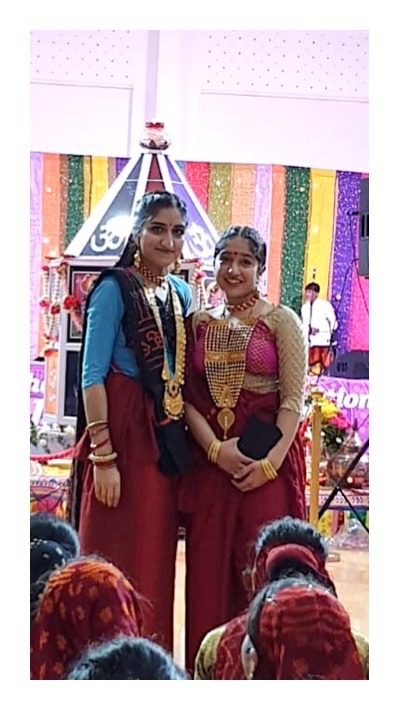
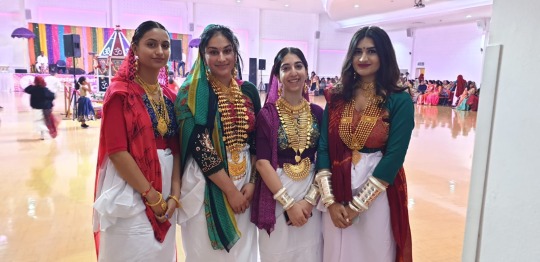


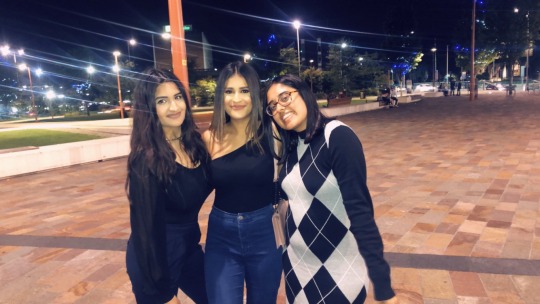

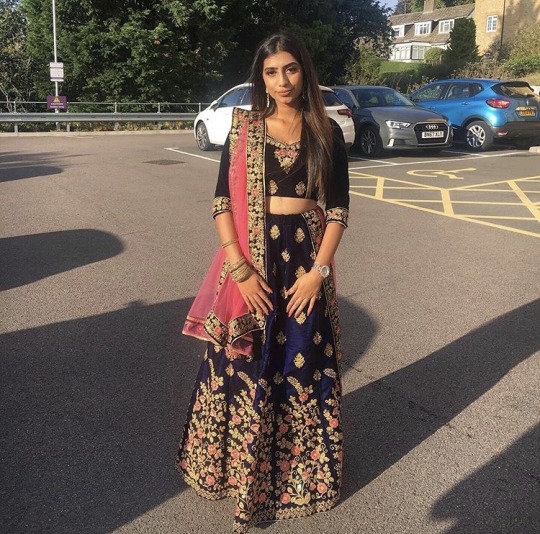
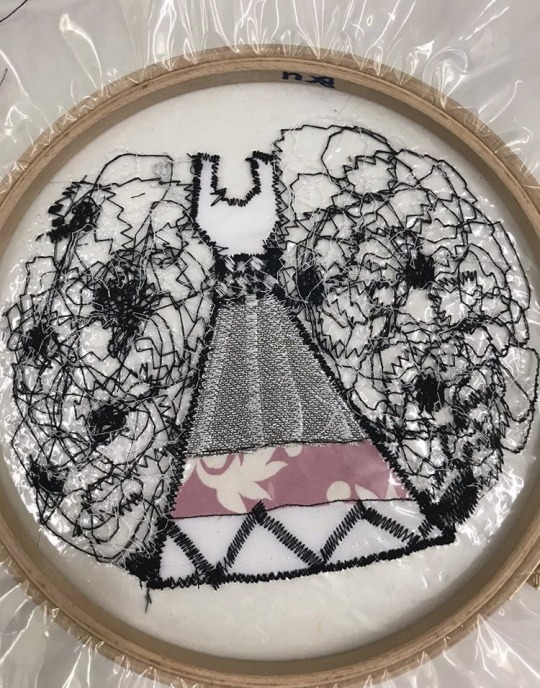
2.As a British India girl i want to show people how two clashing cultures are balanced out with our lives. When we go to social events as girls we’re expected to dress in formal indian wear. These clothes have intricate embroidery and serialised thread work. I wanted this to be shown in my work so i decided to sew together something similar to what my sister is wearing and surrounded it with thread work. The clear film that you’re meant to wash away after sewing through it didn’t quite leave the fact I wanted to and instead the embroidery fell out leaving me with scraps of material. Initially the idea felt as though it may work but after trying to execute it I soon realised that was not the case.  then void you work around the material was left to be very floppy and had no substance therefore just disintegrated.  for this reason I could not use this embroidery work in my sketchbook
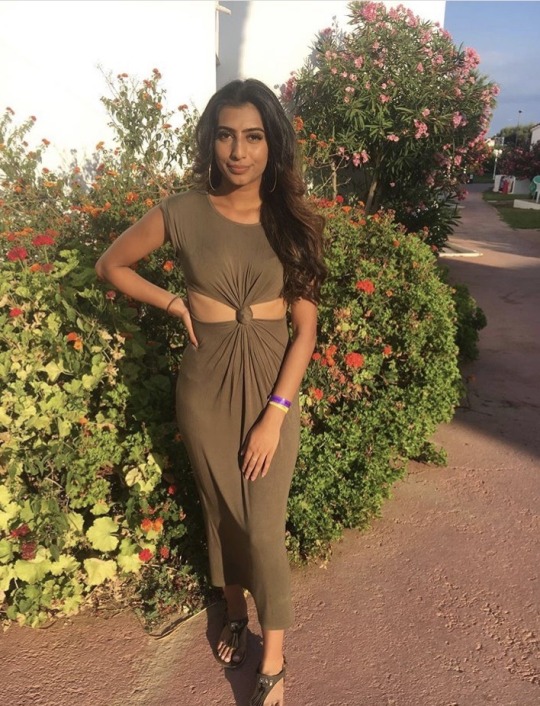
3.The same girl, just in a different setting.
Away from other people from the same culture, which means none to judge. As a British Asian girl, i get judged for everything. From who i talk to, too how i dress. Being in a different environment away from people you know means you can be yourself more. For the main part of my project I have decided to recreate a dress that I would wear in a more westernised situation like this picture dictates.

4. In the second page of my sketchbook I decided to recreate a traditional Indian dress which is called the “lengha.”  in order to get the effect of having embroidery running throughout the skirt I decided to draw directly into my sketchbook a very simple yet effective design that would show us what kind of invoice you might be on some of these dresses I then sewed a sheer fabric on top of the drawing to show us what kind of material and shape the bottom half of the dress would be like I decided to completely draw on the blouse and the jewellery that would match what someone would wear with the outfit.  The designer that I took a lot of inspiration from for this piece it’s called Sabyasachi. He is a famous Indian fashion designer who is known to recreate cultural outfits in a more modernised way which entices the modern day people to wear and continue to carry forward the culture and the traditional wear in their lives.  keeping his designs culturally appropriate yet modernised really enables the modern day generation to enjoy wearing the outfits as well as keeping them rooted to their culture and background.
17.03.2020
To begin this project I completed some primary research of what inspires me within my surroundings, for example the people in my life and connections I come across daily. Looking back on this first bits of research I believe I found clear themes I wanted to develop further therefore I decided to look into how the women in my life dress and what textiles techniques were similar to what they would wear.
I had an induction into printing this is where I watched a tutorial and make my own screen and digital printing materials. During this workshop I had inductions on how to use metallic dyes, disperse, pigment and Procyon. I also prepared pigment and metallic dyes myself, i found that the process of creating the other dyes were similar. As well as screen printing, digital printing is also a technique. Overall, the tutorial was extremely helpful as it allowed me to explore other areas within the fashion industry and looked more closely at textiles. This tutorial was important as it gave me the basic skills of printing which can supported me in this project.
We went on to having an induction to embroidery, this gave me the skills to create samples on Bernina sewing machines. The person giving the tutorial gave a detailed account on the working of the machines. she went onto explain the functions for stitch type and size, tension, as well as the set up. The samples created allowed me to try the different stitches as well as the tensions. We learnt to complete samples in straight stitch, also learnt free embroidery.
My first session into embroidery was an experience, i learnt a lot more about sewing machines and about different stitches as well as certain functions. I understand that i made mistakes however the likelihood of them happening in the future were lessend. Moving on with embroidery I looked to explore the possibilities of combining fabrics.
The induction into weave was quite interesting as we had an induction into many different machines within the workshop, including types of looms which were used to weave cloth and tapestry. We looked at different machines for knitting as well as tufting, this information was given alongside health and safety.
I found the induction very interesting because I learnt to how the loom works as well as learning about many different types of weaving techniques.
The beginning of my research consisted of looking at different artists that fit into my theme of the fashion of women. I found a number of designers who influence my initial narrative.
During the second print workshop I dyed both natural and synthetic fabrics. To do this I learnt about how to tell the difference between natural or synthetic fibbers, this is done by completing burns tests on our fabric. In the workshop we were given a chart of different types of synthetic and natural fibres. The chart explained how they react to fire. For example, if a natural fibre such as cotton or linen is placed near a flame it would burn easily. It would then continue to burn after being removed from the flame and produce grey ash. This identification skill is important as different dyes are used on synthetic and natural fibers.
During the first session in traditional print I created two prints that matched my narrative.
The first type was mono print and it was called colograph printing. To create this print, I used multiple materials as stamps, the different textures created different patterns. on an A5 board, we were told to layer textured paper to create patterns, I used different textures across the board, The board was then varnished. It is important that the printed board is completely dry. This is vital so that the first layer of ink added to textured paper doesn’t leak and doesn't alter my design. During this process I used two coloured inks, yellow and purple. The yellow ink was added using a spreader, the ink was then pressed into the board using rag, this insures that the ink fills the imperfections of the board.
The next step is applying the second layer of ink using a roller. This ink will only be seen on the raised parts of the board for example the letters, and some textures on the first layer. The paper that we were printing onto is wetted to be then rolled out so that majority of the moisture is retained. This allows the ink to permeate the paper when pressed. We then transfer the ink onto the paper using a roller press.
During my second session is weave, I practiced creating plain weaves, I also had an introductions into twill and cross ribs. We were given a visual explanation about the process of these new skills and then we were left to experiment and create my own designs using a pattern grid.
To further develop my samples I decided to add embroidery to my printed fabrics I did this because it shows intricate detailing which is also similar to what some of the women in my family wear. This really helped develop my piece and it gave it a more detailed look. I started this off by slowly using different stitches to try and figure out which one I wanted to use and then when I found what I was looking for I went straight onto my fabric and began working on embroidering my work
To try and help develop my visual communication skills in my final outcome I decided to create collages throughout my sketchbook and involve the sketches that reflected the specific desired look I was going for. I decided to use different forms of things for example are used fine liners to draw something on as well as using thread to sew through layered paper to give it a more defined and edgy look. I decided to replicate some of the pictures that i used from my primary research and remade them using the fabrics materials and the different workshop techniques that we had learnt
Looking back at my development throughout my work I feel like I have achieved some new skills however I could really further develop these skills and ensure that I am better one way to have done this Would have been by practising more and having a clear idea of what I was trying to achieve when it came to starting my work on the different samples I also feel like I would probably have chosen a different theme and I wasn’t as passionate about this theme which meant that it was very difficult for me to come up with new ideas.
I also feel that I should’ve been more precise with what I was doing rather than having a rough look as I feel as if that would’ve worked better with my theme of it being quite pretty however it turned out to look quite messy instead
My finished final outcome was a reflection of different types of outfits that were all embroidered onto one silhouette of a dress that was made out of fabric. Why did was I sewed on pictures of some of the women in my life and the different types of clothes they wore on to address that was similar to what I have in real life the idea behind this was that I wanted to show how each person in my life has had an affect on the way I dress and my fashion choices
Throughout this process I completed a number of workshops that helped make my theme presentable I have interpreted the scene in the direction of my own every day life and based on the fashion choices either. Through this project I want to busy communicate my own fashion choices as well as the fashion choices of the woman that I that inspire me.
My research that this project was quite vague which was what was my main downfall however I did conduct a lot of primary source research when it came to gathering my own materials however my secondary research was not the best. Through this project I learnt many practical skills for example weave embroidery and printing. Considering I’ve never weaved or printed before I think I learnt successfully how to do these things however I need to brush up on my skills and further my knowledge. It did take me quite a while to learn the basics which is why I don’t think I had time to complete experiment and reach my full potential I also wish I used a large variety of materials and other methods that I could’ve showcased in my work. I created simple samples however wish that I made more of a variety of things also I wished that I had more of a story when it came to my actual sketchbook rather than it just being a collection of outfits and designs. If I had more time I would like to have been more precise and detailed with my work as well as rethink the idea behind what I was trying to show I also would have made more samples and done a lot more secondary research to further my knowledge.

1 note
·
View note
Text
Choosing fabric and fabric types
fab-5.jpg Choosing fabric can be overwhelming, there’s often too much choice. When I can’t decide, I ask for small samples that I take away, so I have time to think - even if its just while I have a cup of coffee. Try not to buy on price alone, some of my ‘bargains’ have never been used. Here is a brief overview of the types of fabric used and some tips on working with them. Fab3.jpg Woven Fabric Basic woven fabric is constructed with threads interwoven at right angles to each other. The threads running down the length of the fabric are called the warp and the threads that run across the width are called the weft. This form of construction usually creates a fabric that is rigid or non-stretch in the warp or weft direction although flexible on the bias – an angle of 45 degrees to warp or weft. There are also stretch woven fabrics where Lycra or Elastomeric yarns are included in the weave construction. These fabrics can stretch in one or both directions depending on how the stretch yarn is added in the weaving process. The other form of stretch woven is called a mechanical stretch. This is when a chemical finish is applied to the flat fabric causing it to shrink creating a stretch when pulled. The stretch quality in a mechanical stretch fabric is not as strong or long lasting and will not keep bouncing back. For example if a tight fitting skirt is made in a mechanical stretch fabric it will ‘seat’ and not bounce back until it is washed again. Terms such as denim, canvas or twill, refer to the type of weave pattern. To sew with woven fabrics is fairly straightforward. Use a universal needle and straight stitch setting on your sewing machine. Vary the size of needle and stitch length to suit your fabric weight. fab6.jpg Knitted or Jersey Fabric Knitted fabric is more complex in construction than woven fabric. In its most basic form it is made from a series of interlocking loops formed by a single thread continually looping through the last row of loops created. The resulting fabric is much more flexible than a woven fabric and can stretch in any direction. In a similar way to mechanical stretch woven fabrics, if there is no Lycra or elastomeric content in the yarn used, tight fitting garments will ‘seat’. T-shirts are often made from basic jersey with no added stretch content. The fabric used to make leggings will usually contain 4% - 6%stretch fibres whereas performance sportswear and swimwear require a high percentage approximately 18%. Terms such as single or double jersey refer to the looped construction created by the needle bed set up of the knitting machine. Single jersey is knitted on one bed, either flat or circular, so the loops always fall to the same side, creating a right and wrong side. Double jersey is knitted on a twin bed set up so there is usually two right, though sometimes differing, sides to the fabric. It is generally thicker and more stable to work with. To sew with knitted fabrics use a Ballpoint or jersey needle, these are designed to push the threads aside as they stitch. This prevents any laddering resulting from broken stitches. Selecting the best stitch for jersey fabrics is dependent on the amount of stretch required. Too little stretch and the sewing thread can break when the seam is stretched. For most side seams I like to use a plain straight stitch however I apply a little tension to the fabric as I feed it under the machine foot. For waistbands and hems I use a zigzag stitch to allow for more stretch. If my jersey fabric splays out, I generally use a steam iron, without pressing the fabric, to relax the fabric back into shape. In the Stretch Pencil Skirt project there are a number of alternatives given for tackling hems in different ways. Fab-2.jpg Fine silky fabrics I find these the trickiest to work with but sometimes I can’t resist because of the luxurious delicate handle. Always use a finer needle whether it’s a Universal or Ballpoint. You can also get specialist needles for Microfibre that I have used on natural silks as well as synthetic silky fabrics. For buttonholes try using a stick on fabric stabiliser as used by embroiderers, I use Stitch and Tear. This will stop your fabric puckering up. fab-7.jpg Technical Fabrics This is a term that refers to either woven or knitted fabrics that are coated or bonded with a chemically produced fabrication. PU and PVC are terms used for imitation leathers – PVC stands for plastic Polyvinyl plastic coated woven fabric with a high sheen like patent leather. PU is a Polyurethane coated jersey fabric with a sheen finish and stretch qualities. Neoprene or scuba fabrics are bonded imitation rubber like fabrics with a jersey backing for increased flexibility. For technical fabrics with a jersey backing I’ve found I get the best results from using a ballpoint or jersey needle. For woven backed technical fabrics I use a Universal needle but if that has difficulty puncturing the fabric I use a leather needle. I also lengthen the stitch length to get a smoother result. The shiny surface of these fabrics can stick when in contact with the presser foot or machine plate. To avoid this happening use a Teflon foot and make a template of non-stick baking parchment to place over the machine plate, secure this with tape. For some PVC fabrics It can be impossible to pin your seams in place before stitching so try using a double-sided basting tape or alternatively hold the pieces together with small bulldog or paper clips. Always keep your technical fabrics rolled rather than folded this will stop any permanent creasing. fab4.jpg Leather When sewing with leather select skins that are reasonably lightweight and flexible. If you have never sewn with suede or leather, but would like to have a go, most suppliers have off cuts or part skins at reduced prices, so you can try out before investing in the materials for a whole garment. As leather is neither woven nor knitted fabric it has a tendency to tear at the seams, if there are too many stitch perforations. To avoid this increase your stitch length and always use a leather needle, its spear like point cleanly cuts the stitch hole. Try out the strength of your seam on an off cut. As with technical fabrics, leather can be impossible to pin the seams in place before stitching so try using a double-sided basting tape or alternatively hold the pieces together with small bulldog or paper clips. As with technical fabrics, keep your leather or suede rolled not folded. Before you start making - Once you‘ve bought your fabric always wash it before sewing. If you are not sure it’s washable, cut a 20cm square and place it in a 30-degree wool wash. Then when it’s washed and dried re-measure to check shrinkage and also to review the handle of the fabric. If you don’t like the result, make sure you only dry-clean the garment you are going to make. Before washing lengths of fabric, unfold them and iron out any creases. Loosely load into your machine and use a liquid detergent. These steps should avoid any unevenness in the colour fading especially with indigo and pigment dyed denim or coloured linens. The reason for pre-washing fabric is that during the manufacturing process, fabrics are often ‘stentered’. This is when they are pulled into a uniform width and length and a finishing chemical applied. The problem with this is, that when the fabric is subsequently washed, it ‘relaxes’ back or shrinks. So by washing it before making, you can make sure what you make doesn’t shrink. Do not wash suede, leather or PVC. I have washed PU not because it would shrink but because it can have an unpleasant chemical smell. This article is taken from the book The Makers Atelier - Essential Collection available HERE http://dlvr.it/PQyg9r
3 notes
·
View notes